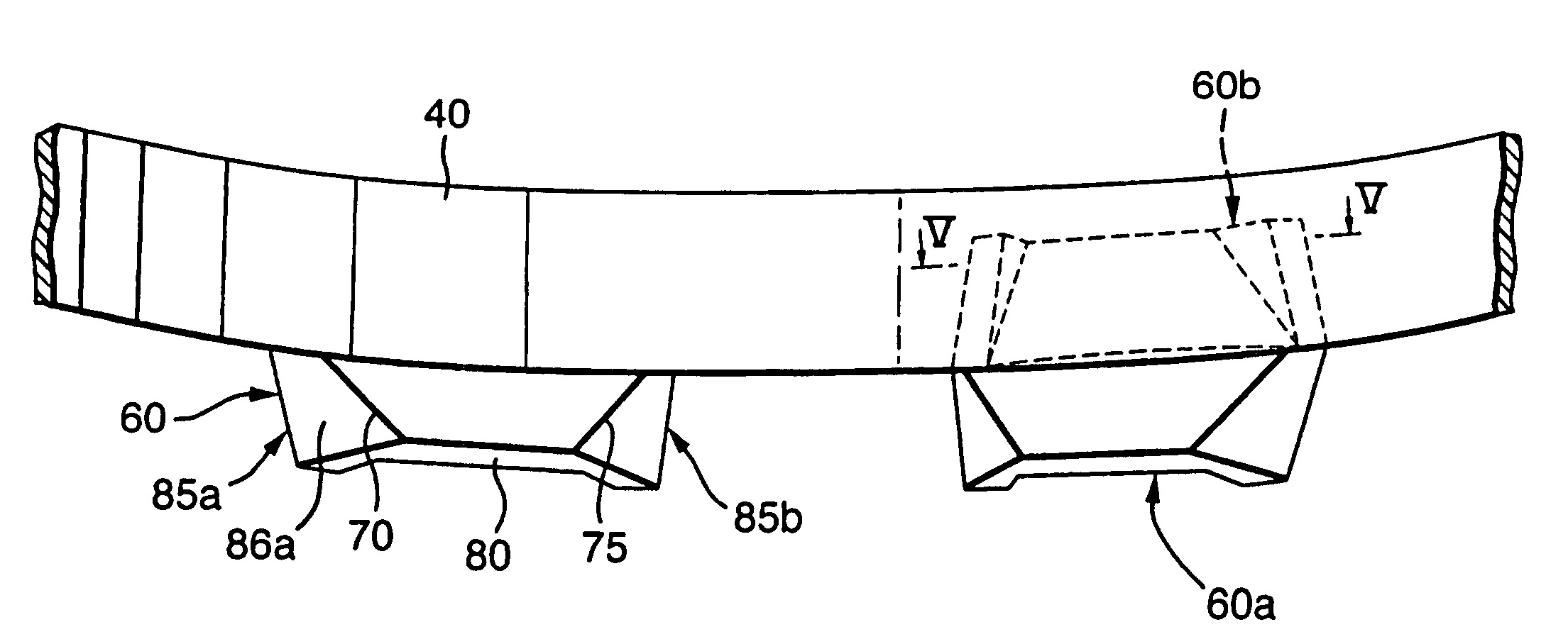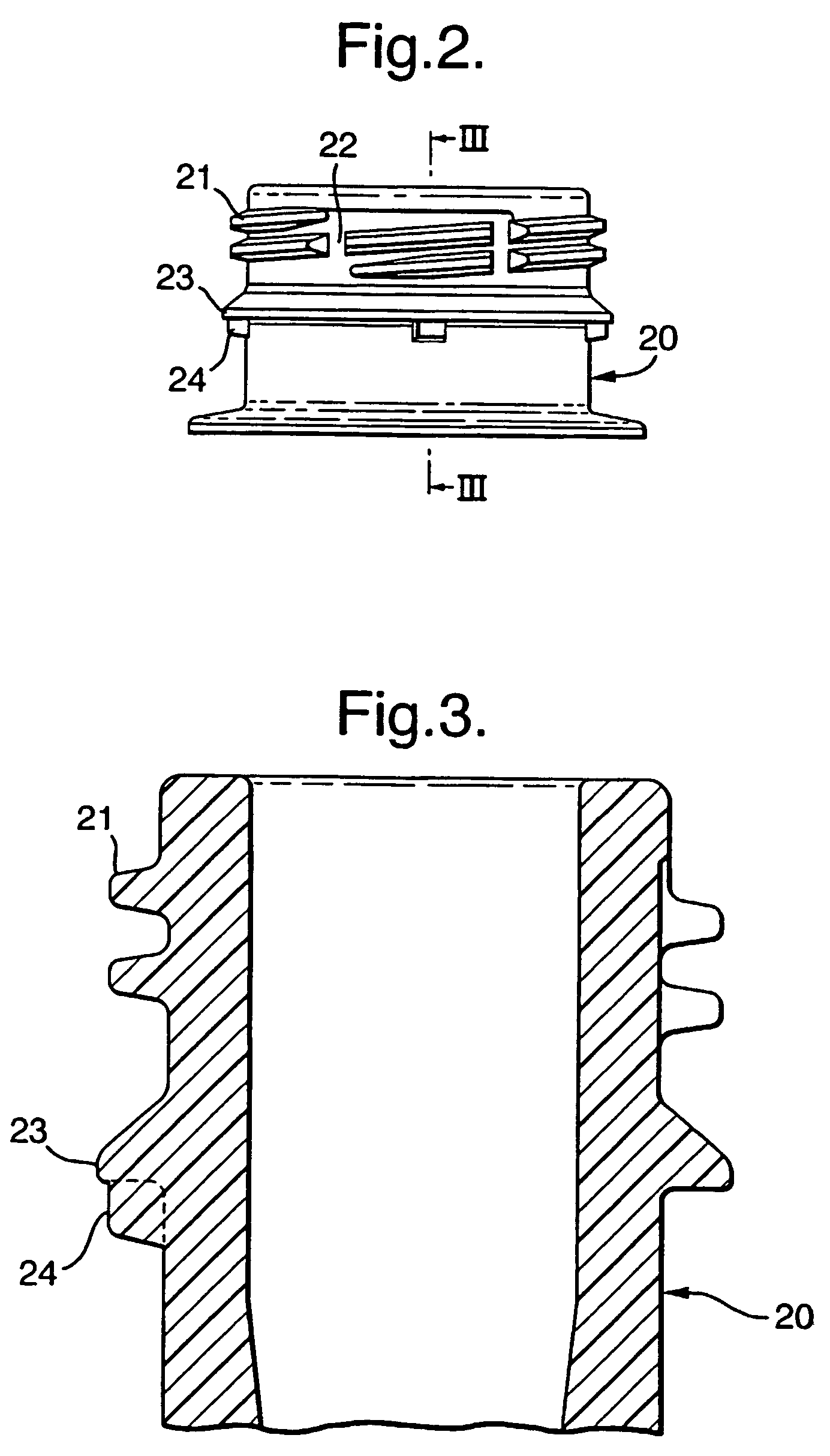Closure cap
a technology of retaining flap and closure, which is applied in the field of closing flap, can solve the problems of reducing the maximum length of the retaining flap, tampering evidence present in the closing twist, and achieve the effects of improving the rigidity of the flap, and increasing the contact area
- Summary
- Abstract
- Description
- Claims
- Application Information
AI Technical Summary
Benefits of technology
Problems solved by technology
Method used
Image
Examples
Embodiment Construction
[0029]Referring first to FIG. 1 there is shown a closure cap generally indicated (10) which is attached to a container neck (20), in this case-from a beer bottle. The closure cap (10) comprises a top panel (30) with a cylindrical skirt (35) depending from its periphery. A tamper-evident band (40) is frangibly connected to the open end of the skirt (35) by a plurality of frangible bridges (50). The length of the cap (10) is approximately 14 mm; a standard plastics cap for bottles is approximately 20 mm. In this embodiment the cap (10) as a whole and the band (40) are much shorter than usual, although of course the present invention is not limited to such closures. Whilst not illustrated, the cap may include a liner, such as a gas scavenging liner, which may be particularly useful for products such as beer which are sensitive to oxygen.
[0030]Referring now to FIGS. 2 and 3, the-container neck (20) is shown in more detail. The neck (20) has a single start thread (21) which includes seve...
PUM
 Login to View More
Login to View More Abstract
Description
Claims
Application Information
 Login to View More
Login to View More - R&D
- Intellectual Property
- Life Sciences
- Materials
- Tech Scout
- Unparalleled Data Quality
- Higher Quality Content
- 60% Fewer Hallucinations
Browse by: Latest US Patents, China's latest patents, Technical Efficacy Thesaurus, Application Domain, Technology Topic, Popular Technical Reports.
© 2025 PatSnap. All rights reserved.Legal|Privacy policy|Modern Slavery Act Transparency Statement|Sitemap|About US| Contact US: help@patsnap.com



